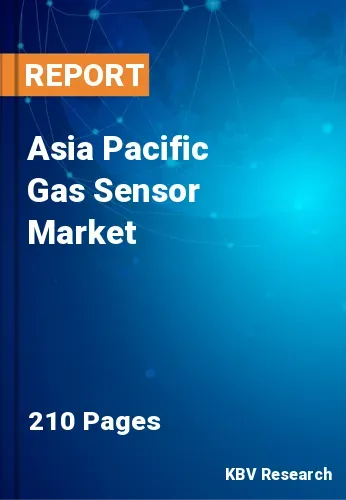The Asia Pacific Gas Sensor Market would witness market growth of 9.6% CAGR during the forecast period (2023-2030). In the year 2021, the Asia Pacific market's volume surged to 2,523.2 thousand units, showcasing a growth of 9.6% (2019-2022).
Gas sensors are utilized in sterilization equipment to monitor the concentration of gases, such as ethylene oxide (EtO), used in the sterilization process. Accurate monitoring ensures effective sterilization while minimizing potential health risks associated with residual gases. These play a role in point-of-care diagnostic devices, particularly those involving breath analysis. Detection of specific gases in exhaled breath can indicate certain medical conditions, supporting non-invasive diagnostic procedures.
Integrating gas sensors with Internet of Things (IoT) technology has gained prominence, enabling remote monitoring and control. This trend allows for real-time data analysis, predictive maintenance, and enhanced industry decision-making. Ongoing advancements in sensing technologies, including the development of nano sensors and improved materials, are enhancing the sensitivity and selectivity of these. This trend contributes to the accuracy of gas detection, especially in critical applications.
According to the India Brand Equity Foundation, India is one of the greatest sectors for consumer electronics in the Asia-Pacific region. It is home to a substantial talent for electronic and embedded software design. India has committed to attain US$ 300 billion in electronics manufacturing and US$ 120 billion in exports by 2025-26. In India, the implementation of smart home technologies is increasing. With a growing awareness of environmental issues, air quality monitoring devices have become popular in India. All these factors will uplift the regional market’s expansion in the coming years.
The China market dominated the Asia Pacific Gas Sensor Market by Country in 2022 and would continue to be a dominant market till 2030; thereby, achieving a market value of $327.1 million by 2030. The Japan market is registering a CAGR of 8.9% during (2023 - 2030). Additionally, The India market would showcase a CAGR of 10.3% during (2023 - 2030).
Based on Type, the market is segmented into Wired and Wireless. Based on Product, the market is segmented into Carbon Dioxide (CO2) Sensors, Carbon Monoxide (CO) Sensors, Oxygen (O2)/Lambda Sensors, Nitrogen Oxide (NOx) Sensors and Others. Based on Technology, the market is segmented into Electrochemical, Solid State/MOS, Infrared (IR), Catalytic, Photo-ionization Detector (PID) and Others. Based on End User, the market is segmented into Industrial, Environmental, Medical, Agriculture, Petrochemical, Building Automation & Domestic Appliances, Automotive and Others. Based on countries, the market is segmented into China, Japan, India, South Korea, Singapore, Malaysia, and Rest of Asia Pacific.
Free Valuable Insights: The Global Gas Sensor Market is Predict to reach $3.5 Billion by 2030, at a CAGR of 9.4%
The market research report covers the analysis of key stake holders of the market. Key companies profiled in the report include Siemens AG, Robert Bosch GmbH, Amphenol Corporation, ABB Group, GfG Gesellschaft für Gerätebau mbH, Honeywell International, Inc., Dragerwerk AG & Co. KGaA, Process Sensing Technologies, Tokuyama Corporation, and Nemoto & Co.,Ltd.
By Type (Volume, Thousand Units, USD Billion, 2019-2030)
By Product (Volume, Thousand Units, USD Billion, 2019-2030)
By Technology (Volume, Thousand Units, USD Billion, 2019-2030)
By End User (Volume, Thousand Units, USD Billion, 2019-2030)
By Country (Volume, Thousand Units, USD Billion, 2019-2030)

Our team of dedicated experts can provide you with attractive expansion opportunities for your business.

